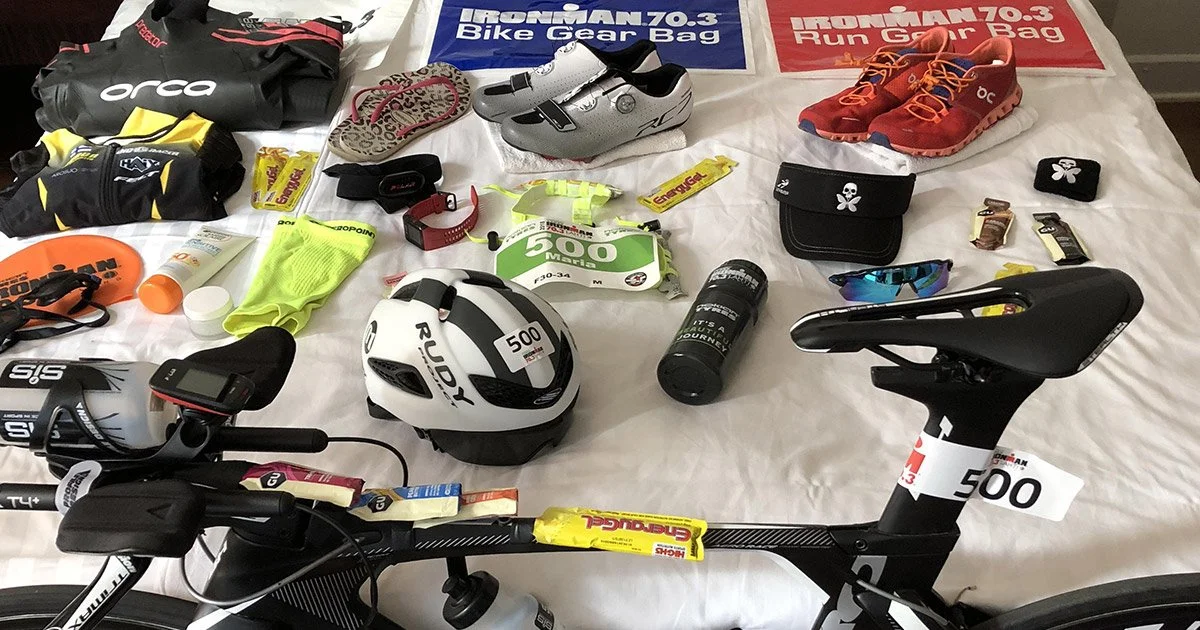How to Choose and Set Up Your Race Season Gear
Most triathletes don’t get excited about gear selection—they just want to train hard and race well. But the truth is, your gear setup can be the quiet hero or the unexpected villain of your entire season. I’ve seen everything from someone forgetting their race belt to a brand-new wetsuit causing full-blown panic in the first 100 meters of the swim. It’s never just about the gear—it’s about how well that gear works for you on race day.
Whether you’re new to the sport or tightening up your approach after years of racing, here’s how to choose your gear wisely and get it dialed in for the entire season ahead.
Start with a Gear Audit: What’s Working, What’s Not?
Before you buy anything new, lay it all out—literally. Pull your race gear out of the closet or bin and ask a few simple questions:
When was the last time I used this in a race?
Did it work as expected?
Did I feel confident using it under pressure?
I recommend doing this early in the season. This gives you time to replace or repair anything without last-minute stress. I had one athlete discover a cracked helmet buckle a week before their race. Thankfully, they had time to swap it out, but it could have been disastrous.
And don’t forget fit—especially if you’ve changed body composition over the offseason. Race suits, wetsuits, and cycling shoes all need to fit just right to function and feel good.
Choosing the Right Gear for Your Race Goals
Your gear should match the kind of racing you're doing—and how you want to race. If you’re sticking to sprint and Olympic events, you might prioritize lightweight gear and simple transitions. If you’re moving into 70.3 or Ironman territory, you’ll need to start thinking about hydration systems, storage solutions, and long-ride comfort.
For example:
Wetsuits: Not all wetsuits are created equal. Find one that balances buoyancy, shoulder flexibility, and ease of removal.
Bike setup: Your road bike might work just fine for shorter races. But if you’re serious about time gains, a properly fitted triathlon bike with an aerodynamic cockpit can save minutes.
Running shoes: Lightweight racers can be tempting, but don’t sacrifice comfort or injury prevention. Pick what you can race in confidently.
And don’t chase trends—chase function. Gear should make racing easier, not more complicated.
Practice With Your Actual Race Setup
This is where many athletes miss the mark. They train with one set of gear and race with another. That’s a recipe for discomfort, mistakes, and sometimes DNF-worthy problems.
If you’re going to race in it, train in it. This means:
Wearing your race suit on brick sessions
Practicing open water swims in your wetsuit
Mounting your bike with your actual race-day setup (shoes, hydration, spare kit)
Running in your exact socks and shoes combo
One of my athletes used a new race belt for the first time on race day—and it snapped halfway through the run. A few low-pressure tests in training could’ve avoided that.
Build a Transition-Ready Gear System
Once your gear is sorted, the next step is how you set it up. Having a “race system” is what turns good gear into great performance.
Think in layers:
Pre-race gear (warmups, pre-race nutrition, timing chip)
T1 setup (goggles, wetsuit, helmet, bike shoes)
T2 setup (run shoes, hat, race belt)
Contingency gear (extra nutrition, spare socks, anti-chafe cream)
Lay it all out the same way every time—at home and in training. That muscle memory will make transitions smoother, especially when adrenaline is high and other athletes are scrambling.
Related reading: Mastering Transitions: Tips for Speed and Efficiency
Keep It Simple. Always.
If you’re ever torn between two gear options, go with the one that’s simpler to use. Complexity rarely wins in triathlon—especially when you’re racing tired, wet, and under pressure.
That extra energy bar in your back pocket? It’ll probably stay there. The fancy aero bottle with a complicated lid? It might cost more time than it saves.
One of the most effective gear setups I’ve ever seen belonged to a junior athlete with no frills—just tight systems and smart planning. They didn’t have the flashiest bike, but they were consistent, efficient, and confident. That matters more.
Your gear is more than just a checklist—it’s a part of your race strategy. When it fits well, works under pressure, and feels like second nature, it gives you something powerful: trust. Trust that you can focus on your effort and execution without being distracted by a loose strap, a jammed zipper, or a surprise discomfort.
So take the time now—before your season gets busy—to build a gear setup that serves you. Check it. Test it. Practice with it. And when race day comes, let it help you do what you trained for.
Want more help getting dialed in? Check out the T1Triathlon Race Day Checklist. The best gear isn’t just fast—it’s what helps you race with confidence.


